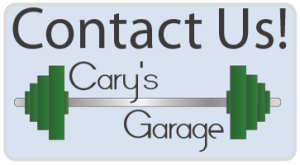Why cool down? Because not doing so could kill you!
Cooling down is very important when you exercise. Let’s start at the beginning though and talk about why warming up is also important. The physiological reason to warm up is to assist your circulatory system in pumping oxygen-rich blood to your working muscles. The idea is to increase circulation throughout the body in a gradual manner. A proper warm up safely prepares the body for the increased demands of exercise. Cold muscles do not absorb shock or impact as well, and are more susceptible to injury.
The benefits to a warm up include:
- Increased movement of blood through your tissues, making the muscles more pliable.
- Increased delivery of oxygen and nutrients to your muscles. This prevents you from getting out of breath early or too easily.
- Prepares your muscles for stretching
- Prepares your heart for an increase in activity, preventing a rapid increase in blood pressure
- Prepares you mentally for the upcoming exercise
- Primes your nerve-to-muscle pathways to be ready for exercise
- Improved coordination and reaction times
Okay. So you’ve warmed up and ran a few miles, performed a strength training routine or taken a class at the gym. It’s time to cool down, although many people skip the cooling down phase of their workout. The cool down serves some very important functions and neglecting to do so can sometimes lead to dire circumstances.
When you fail to cool down after a brisk cardiovascular activity such as running, stairstepping, etc. and just transition to a resting phase such as standing or worse yet, sitting down, there is a danger of insufficient venous return to the heart…Your heart is still beating fast and sending blood down to the legs, but since you have stopped, blood is not returning to the heart fast enough… This is a process called “blood pooling” which can quickly lead to dizziness, passing out and can be associated with negative cardiac events, including heart attack or stroke.
The cool down should last for approximately 5-10 minutes, and should be used for both cardiovascular and resistance training programs, and include a flexibility component. Simply slowing your pace and walking around for a few minutes can help bring the heart rate down to a rate at which you can then stretch, slow your breathing and allow the body to adapt to the cessation of the prior activity.
Your cool down time typically improves over time as your cardiovascular system adapts to the exercise bouts. Generally, the more aerobicly fit your heart is, the quicker its adjustment to variable intensities of exercise… Regardless of time, taking whatever of it you need in order to safely cool down is a very smart and easy thing to do!

